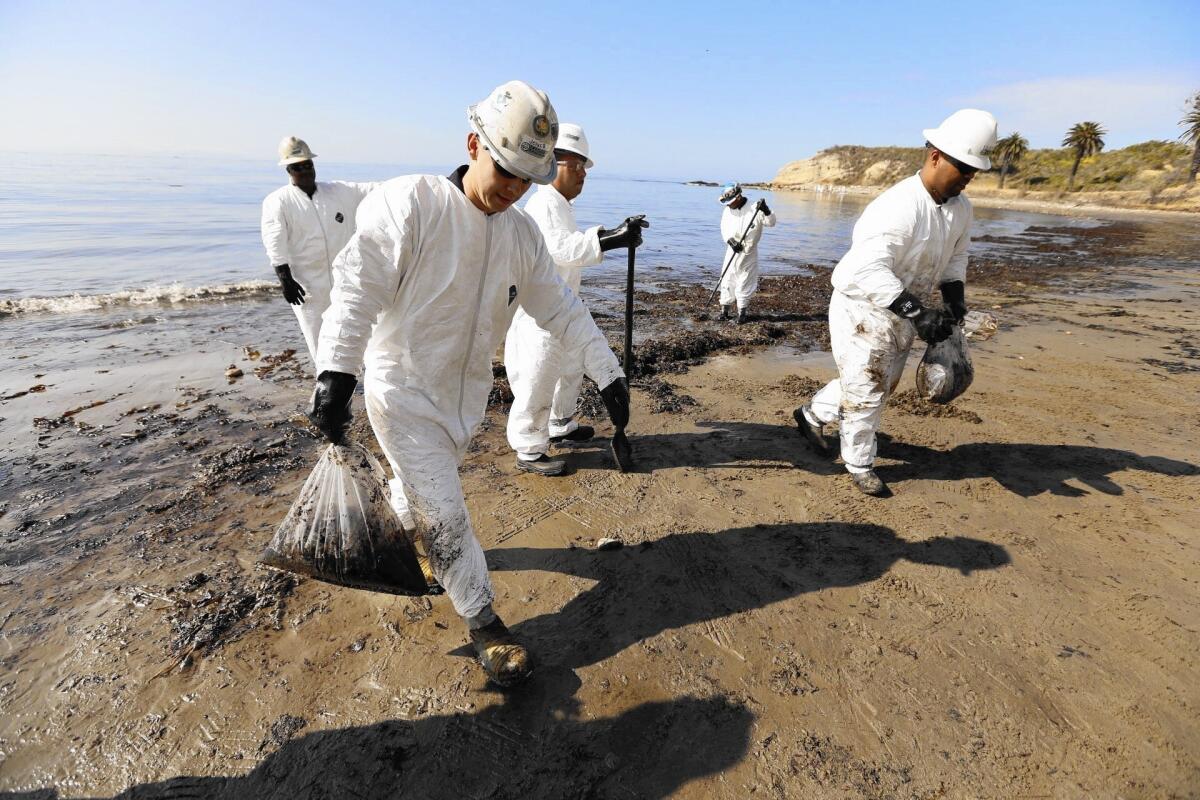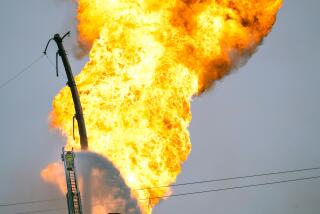Exxon scraps plan for new pipeline after 2015 spill — but may try to resurrect old one

Central Coast environmentalists are celebrating ExxonMobil’s recent decision to scrap plans to replace miles of pipeline through Santa Barbara County, key to revitalizing a local network of petroleum energy production shuttered since the catastrophic 2015 Refugio oil spill.
But at the same time, the oil giant has raised fresh concerns, saying it is instead exploring the possibility of repairing existing, damaged pipeline.
The years-long effort by oil companies to replace two major segments of pipeline could have allowed the company to restart offshore oil platforms along Santa Barbara County’s coast and an onshore processing plant. These possibilities have been long reviled by local environmental groups and some residents, especially after the catastrophic 2015 spill, which continues to loom large in the region.
“This [pipeline] replacement has been hanging over the community’s head for five years now,” said Jonathan Ullman, director of the Sierra Club’s Santa Barbara-Ventura chapter. “I was very happy to hear this news; it felt like their withdrawal signified that the writing was on the wall that they could not continue.”
Ullman said the construction project — had it been approved — had major implications for the environment, wildlife and public health, with heightened risks of oil spills and increased fossil fuel emissions.
The 2015 spill, caused by “extensive” corrosion on a section of pipeline, hemorrhaged more than 140,000 gallons of crude oil along the Gaviota Coast, much of which ended up in the ocean and along the region’s prized coastline, closing Refugio and El Capitan state beaches for weeks and affecting countless seabirds and marine life. Oil heavily coated a stretch of Santa Barbara County’s coast, with small tar balls reaching as far south as Redondo Beach in Los Angeles County.
Officials for Pacific Pipeline Co., a subsidiary of Texas-based ExxonMobil, wrote to Santa Barbara County leaders that it had found “the potential environmental impacts associated with the major construction of a second pipeline unnecessary and avoidable,” according to an Oct. 24 letter, withdrawing its proposal from the county’s permitting process.
The letter, however, also opened the door for another complicated fight in Santa Barbara County, with Exxon officials announcing that the oil giant would change its focus from building replacement pipeline to trying to restore old, damaged pipeline.
“Recent inspections and analysis affirms ... the existing pipeline can be responsibly restarted,” the letter said. It also mentioned that during the replacement pipeline’s environmental review, “staff from the U.S. Army Corps of Engineers and U.S. Environmental Protection Agency indicated that restart of the existing pipeline is likely the Least Environmentally Damaging Practical Alternative under the Federal Clean Water Act.”
Exxon officials did not release additional information about those reviews but clarified that any “formal decision on the [Least Environmentally Damaging Practical Alternative] cannot be made until the entire environmental review and permitting process is completed.”
Exxon officials did not respond to questions from The Times requesting further details about such an undertaking, including any analysis of environmental impacts.
“Pacific Pipeline Company and ExxonMobil have assets that we intend to leverage to deliver reliable energy to Californians and others,” Exxon spokesperson Julie King said in a statement.
Kelsey Gerckens Buttitta, a spokesperson for Santa Barbara County, said Exxon and its subsidiaries do not have any current applications under review regarding the pipeline, noting that another recent proposal to upgrade multiple valves along the line was not approved this summer. However, any plans to restart the lines would fall under the jurisdiction of the California State Fire Marshal, she said, making it clear that county officials would still be paying attention.
“The County does have concerns with the integrity of restarting the existing pipeline but we are confident in the California State Fire Marshall’s ability to ensure that these concerns are addressed through their review authority,” Buttitta said in a statement.
Environmental groups also shared overwhelming concerns about Exxon’s portrayal of restoring the existing pipeline, which was found to be heavily corroded in 2015.
An oil spill poured thousands of gallons of crude into the waters off Santa Barbara County on May 19, covering about nine miles of coastline.
“At this stage of the climate crisis, building new oil infrastructure is reckless, to say the least,” said Maggie Hall, deputy chief counsel at the Environmental Defense Center, a nonprofit law firm that advocates for environmental protection in Santa Barbara, Ventura and San Luis Obispo counties.
“However, restarting a corroded and compromised pipeline that already caused one massive oil spill is even worse,” she said in a statement. “There is no way for the pipeline owners to credibly claim it will be safe. If this pipeline is allowed to restart, it’s not a question of if, but when, it will be responsible for another catastrophe.”
Ullman said he is hopeful that Exxon continuing to show interest in further construction in Santa Barbara County is simply a ploy by the company to keep investors interested, because he doesn’t believe such a plan could be successful.
“That pipeline cannot be repaired,” Ullman said. “It must be abandoned for the safety of the people who travel on the Gaviota Coast, but also for the massive amount of wildlife and sea life that’s there now.”
The ruptured pipeline that created the 2015 spill was built in 1987 and extended about 11 miles along the Gaviota Coast. It is part of a larger oil transport network that expands into Kern County, which Exxon had hoped to rebuild almost entirely, for a total of more than 120 miles through Santa Barbara County.
With the replacement project now halted, Ullman hopes to see the existing lines — still not in operation — removed.
“We’re still dealing with the consequences and the threats,” Ullman said. “The Gaviota Coast is really a special place ... and worth protecting.”
More to Read
Sign up for Essential California
The most important California stories and recommendations in your inbox every morning.
You may occasionally receive promotional content from the Los Angeles Times.











